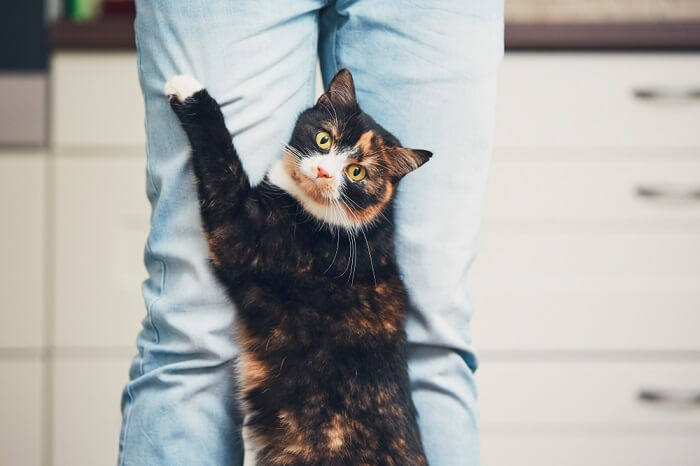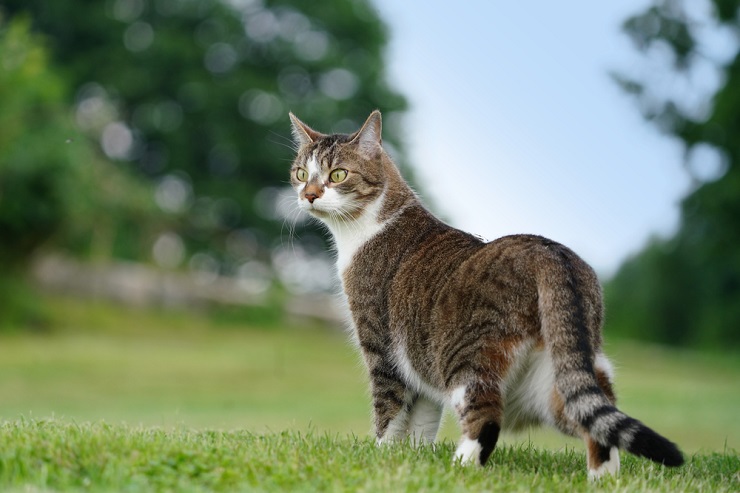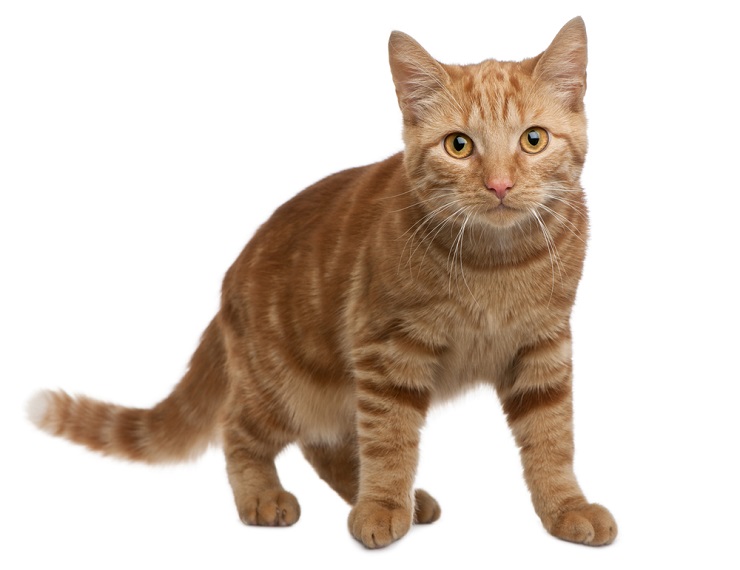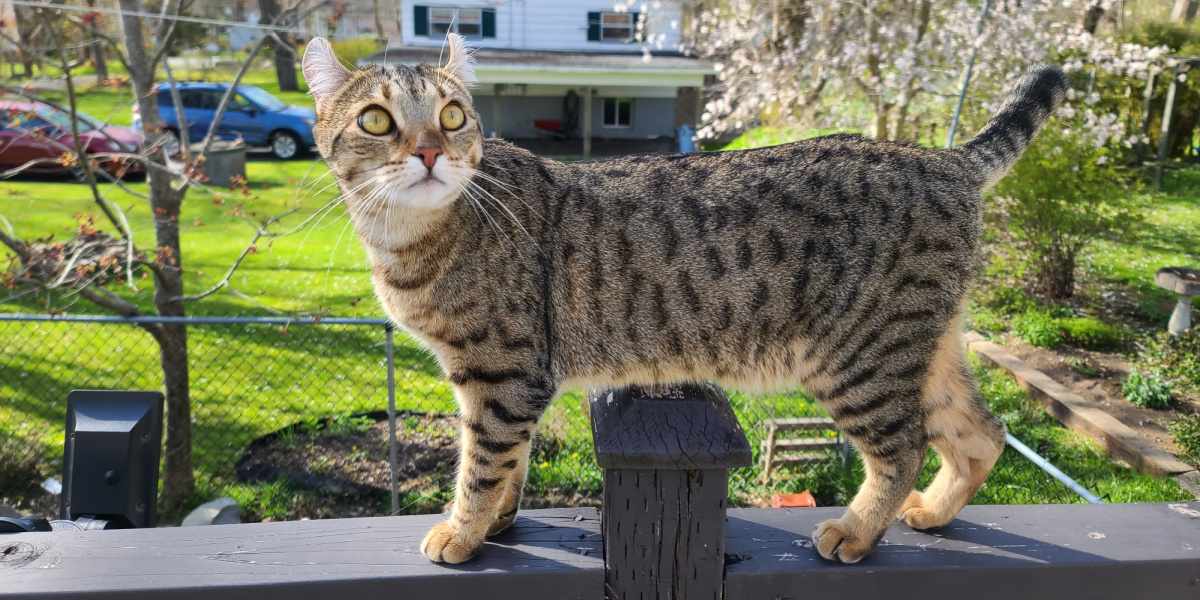
All cats should be able to walk, run and even jump easily, with strong, well-balanced back legs. There are a number of conditions that can affect the back legs, causing lameness, weakness, lack of stability, poor balance, and even complete collapse.
Cats have powerful back legs, used to help a cat prowl, run, climb and jump as part of their normal activities, such as hunting. The function of the back legs is supported by a combination of strong muscles, with a rich blood supply, and an intricate nerve supply.These muscles, blood supply and nerves can stop functioning normally for a number of different reasons, and when this happens, the back legs can become weaker, unable to support the cat’s weight properly.
This causes the cat’s hindquarters to flop down, either being carried lower than normal, or even collapsing completely, so that they are being dragged behind the cat. The issue may start with the cat just limping, then progress to more serious signs with difficulty walking.
What Causes the Back Legs to Collapse?

Any condition which disrupts the muscle or nerve function, or the blood supply, of the back legs can cause them to collapse.
There are some different medical terms for the types of collapse.
- Paraparesis: weakness of both hind legs
- Paraplegia: complete paralysis of both hind legs
- Quadriparesis: weakness of all four limbs
- Quadriplegia: paralysis of all four limbs
The main common causes are listed below.
Spinal Disease
Any damage to the spine, from trauma to slipped discs to tumors, can stop the normal functioning of the spinal cord providing the nerve supply to the back legs, leading to weakness and collapse. Rarely, some diseases affecting the central nervous system (brain) may be involved.
Vascular Disease
Diseases involving the blood supply, such as clots (e.g. thromboembolism affecting blood vessels such as the aorta, known as a saddle thrombus) can disrupt the blood flow to the back legs, causing severe weakness and collapse. Heart disease such as cardiomyopathy can predispose to this issue.
Metabolic Diseases
Feline diabetes mellitus, can cause unusual signs (such as a neuropathy causing a plantigrade stance of the hind legs) which may present as the collapse of the back legs. Other metabolic diseases (such as kidney disease) can cause general weakness which can present as rear leg problems. Older cats may be more prone to these types of issues. Sometimes more generalized diseases, such as feline infectious peritonitis, may also cause the back legs to collapse.
Trauma
Damage to the physical structure of the back legs, from the feet up to the pelvis, can cause collapse. This can affect the soft tissues (e.g. sprains of muscles and tendons), as well as the bones. Nerve damage is also possible.
Old Age Changes
Conditions in older cats, including osteoarthritis (e.g. due to hip dysplasia), can lead to lameness, weakness and collapse of the hind end of the cat.
When to Call the Vet

All cats who are collapsed on their back legs require veterinary care.
As part of responsible pet care, if your cat develops a collapse of the back legs, you need to take them to your DVM veterinarian without delay, so that the cause of the problem can be identified and so that treatment can be given.
Your veterinarian may take the following steps:
- History taking
- Physical Exam
- Routine blood tests
- Specialized blood tests e.g. for FeLV or FIV
- Blood pressure measurement
- Imaging, such as x-rays, CT or MRI scans
Treatment for Collapse of the Back Legs

Treatment for the collapse of the back legs is very variable, depending on the cause.
Always discuss what would be best for your cat with your veterinarian, as treatment options will vary depending on the cause.
- Spinal disease: This may require strict rest, combined with anti-inflammatory medication, or in severe cases, spinal surgery may be needed to solve the issue.
- Vascular disease: Blodd clots (e.g. aortic thromboembolism) need intensive veterinary care, including pain relief and anti-inflammatory medication, as well as treatment of the underlying heart disease.
- Metabolic diseases: Cats with diabetes require stabilization with fluid therapy and insulin. Other diseases will require specific treatments.
- Traumatic injuries: these require treatment for the physical damage, with anti-inflammatory pain relief, supportive supplements, and strict rest (e.g. keep your cat indoors, but away from your dog) in minor cases, or surgical correction (e.g. some fractured bones).
Prognosis varies with each individual case. Minor causes and treatable conditions can make good recoveries, but some more severe cases have a much poorer prognosis.
Prevention of Collapse of the Back Legs
It can be difficult to prevent this condition from occurring. Always follow your veterinarian’s recommendations for preventative healthcare for your cat. Provide a safe area for them to play and exercise in, and seek veterinary advice if they are unwell.







